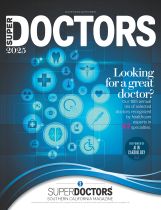American Association of Oral and Maxillofacial Surgeons (AAOMS)
March 19, 2019
Routine tests used to guide treatment for mouth cancers can reveal two or more significant chronic health conditions, allowing doctors to better evaluate those patients, according to a new study.
Typically conducted during the initial steps of cancer treatment plans, these exams for oral squamous cell carcinoma (OSCC) help discover comorbidities – the presence of one or more conditions existing with a primary disorder – in patients with OSCC (cancer in cells in the lips and oral cavity), researchers said.
Clinicians should evaluate previously undiagnosed conditions found on imaging studies, researchers recommend in the study published in the January issue of the Journal of Oral and Maxillofacial Surgery – the official journal of the American Association of Oral and Maxillofacial Surgeons.
“Within the limitations of this study, it can be concluded that imaging staging examinations facilitate, accelerate and improve the pre-therapeutic diagnostic process in patients with OSCC, which enables clinicians to assess these patients more accurately and provide tailored and individual treatment plans,” researchers wrote.
The study involved 178 adults with OSCC who underwent a commonly used staging examination – fluorodeoxyglucose positron-emission tomographic computed tomography (FDG-PET/CT) or contrast-enhanced computed tomography (ceCT). Researchers used the Charlson Comorbidity Index (CCI) to measure comorbidity before and after staging.
The imaging studies revealed “many previously unknown comorbidities,” and a “considerable increase of the average CCI score” occurred, according to the study.
The most common site of occurrence for distant metastasis of OSCC (cancer that has spread to another location) in patients was the lung, and the most coexisting cancers appeared in the esophagus, colon and the organs and tissues of the respiratory tract and the upper part of the digestive tract. The most frequently and newly detected comorbidities found by imaging were lung emphysema, abdominal pathologic processes, vascular disease and second cancers.
“It must be stressed that the imaging findings might only enhance, but not replace, basic clinical, laboratory and imaging techniques. Comorbidity assessment can be accurate and comprehensive only if all sources of information are used,” researchers wrote. “Nevertheless, whole-body imaging examination modalities such as FDG-PET/CT and ceCT are useful, fast and cost-effective screening tools that provide important comorbidity information.”

